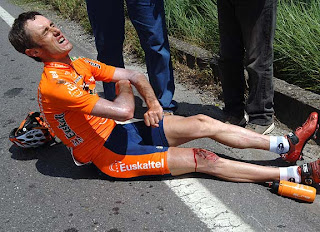 About $1.3 million!
About $1.3 million!
That’s how much in grant money a Physical Therapy professor from The University of Delaware was awarded to study the prevention of these stress fractures. Irene Davis, PT, PhD, the director of the university’s Running Injury Laboratory and director of research for Drayer Physical Therapy was awarded the grants from the NIH and the Dept. of Defense.
Stress fractures are a real cost and challenge to the military. Its not uncommon for a soldier that suffers a stress fracture to be off-line for 6 months or more. Considering the enormous cost of training soldiers and the high frequency of stress fracture occurrence, I’d say the DOD is getting a real deal on this!
The study is really quite interesting, incorporating biofeedback and gait re-training to reduce impact forces during running at levels much greater than what a cushioning sneaker could provide. Remember, just because we all learn how to run does not imply we all know how to run correctly.
Stay tuned for more on this topic, I have a feeling that this could be one of those studies where I walk into work at the Army clinic one day and I’m met with a biofeedback device that I have no idea what to do with!


